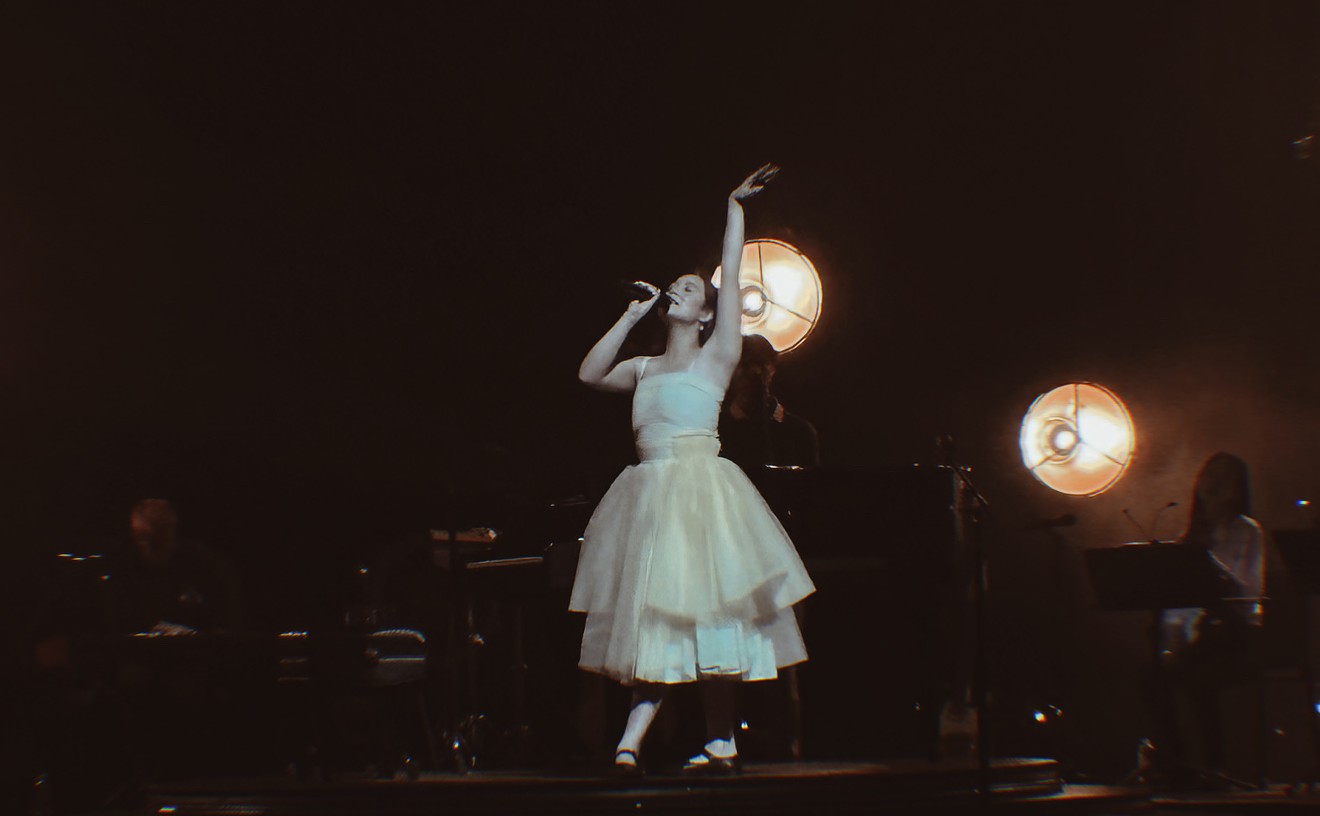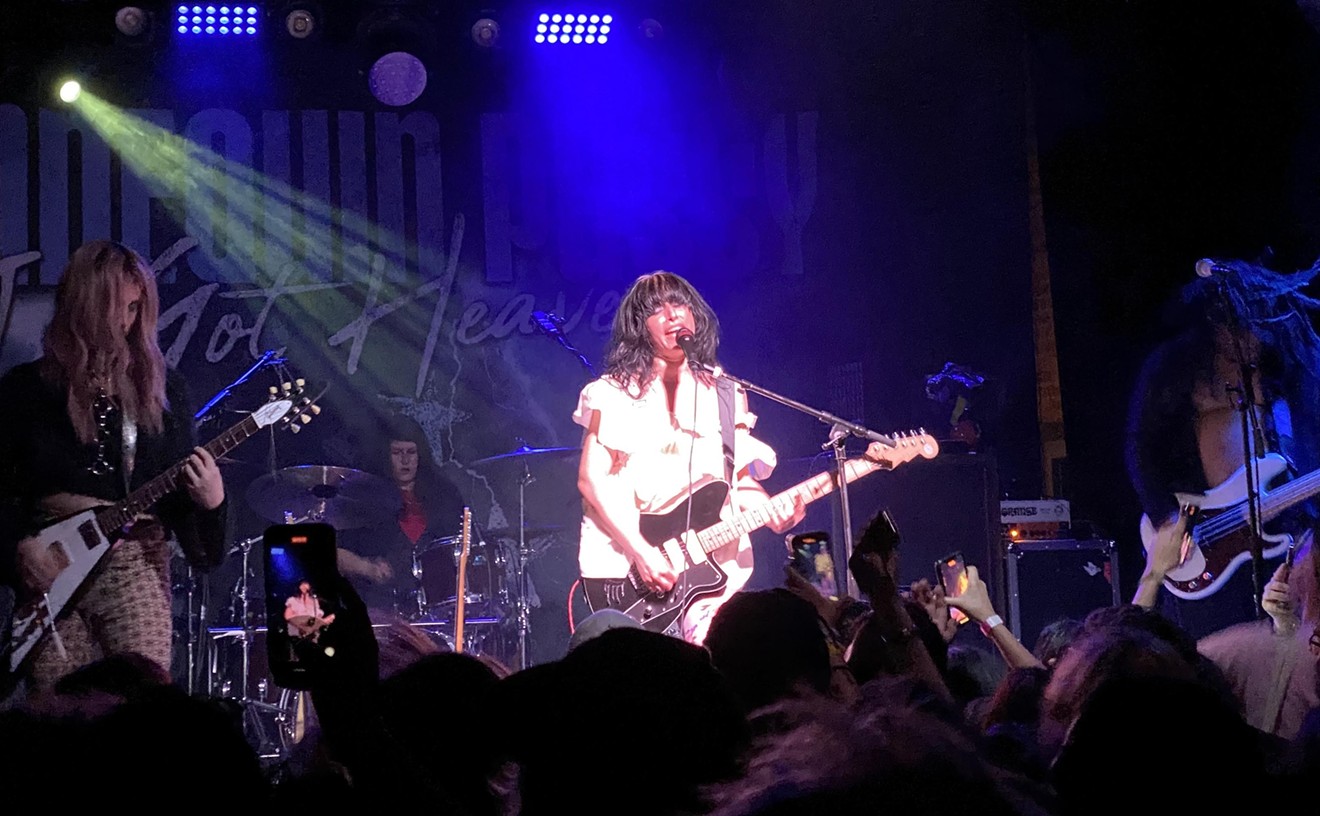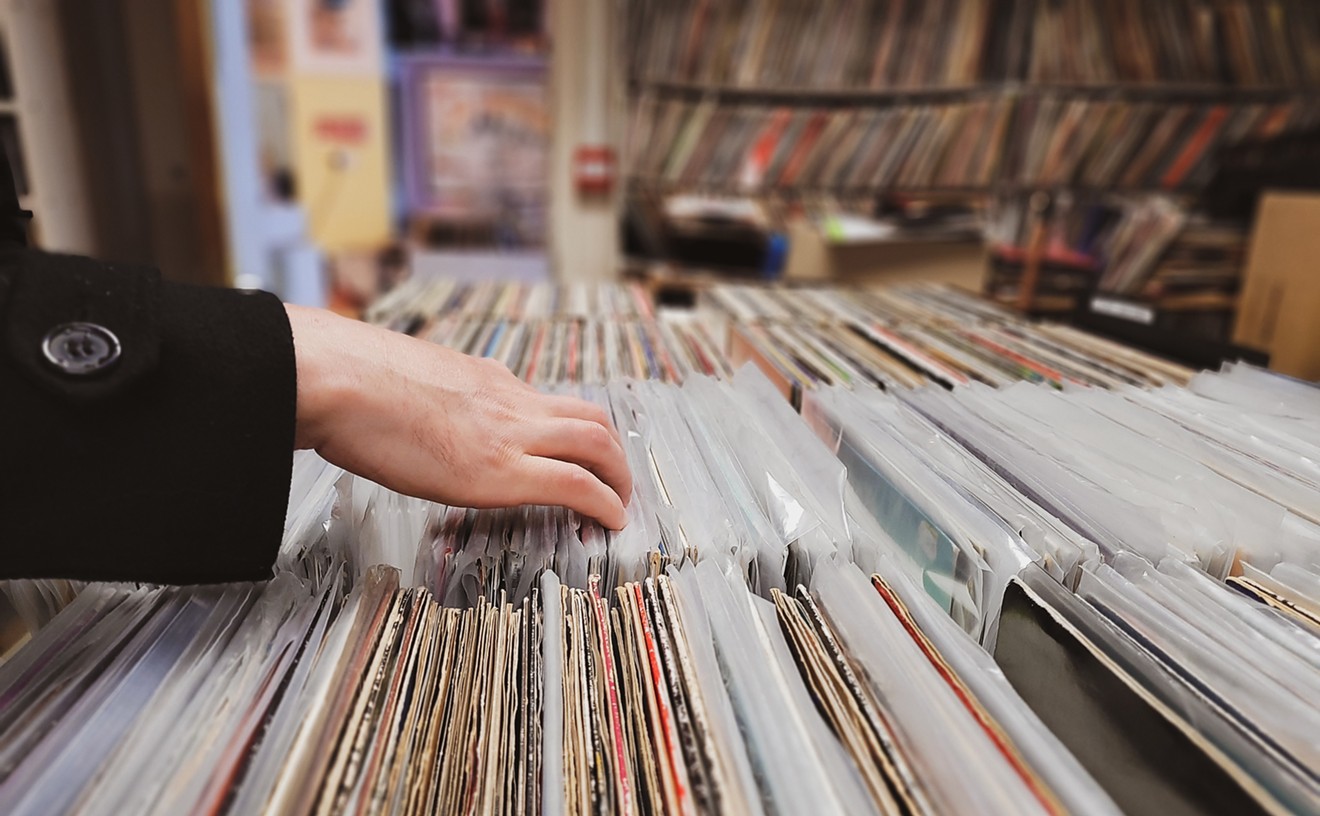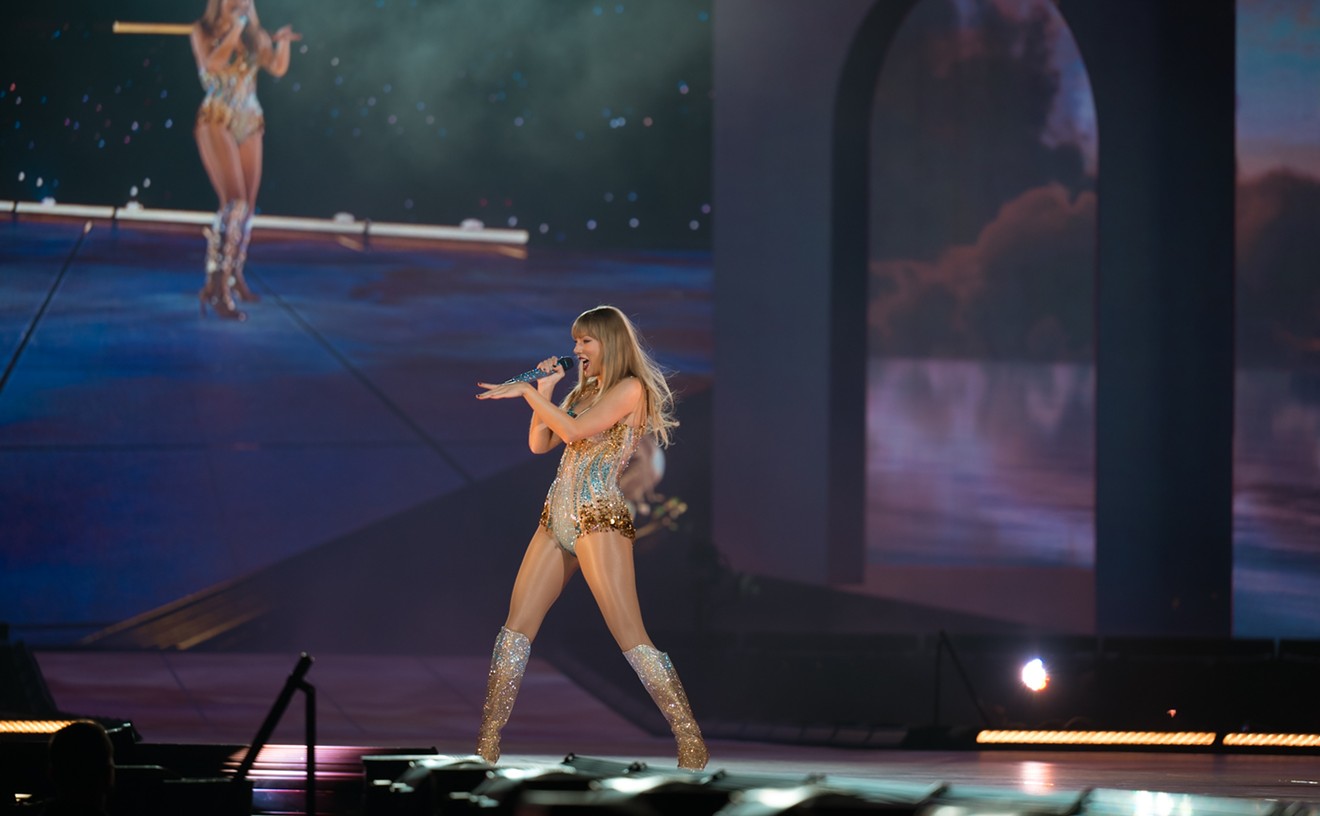When it comes to performers who existed between these extremes, future reps are more difficult to predict. Some players who were regarded as talented but somehow less compelling or innovative than the finest of their peers have seen their recordings relegated to the round file. But just as many others have been rediscovered by generations uninterested in the baggage the musicians once carried.
Multi-instrumentalists Yusef Lateef and Rahsaan Roland Kirk fall into the latter category. Not long ago, their names seldom passed the lips of serious jazz connoisseurs, but the appearance of two new boxed sets--Lateef's The Man With the Big Front Yard and Kirk's Aces Back to Back, both on the 32 Jazz imprint--is an indication that things are different now. The reasons for this shift aren't complex: Lateef and Kirk both enjoyed popularity during the '60s, and their platters on Atlantic Records sold briskly by jazz standards. But Lateef was widely seen as having compromised his craggy art by cutting it with soul and R&B influences, and Kirk, literally a one-man horn section, was dismissed by plenty of reviewers as a novelty act.
Seen from a distance of decades, these opinions don't seem entirely unfounded: Lateef's late '50s work for companies such as Savoy was often more challenging than his Atlantic oeuvre, and Kirk's offerings were quite erratic, veering from one style to another at the least provocation. But their music is frequently thrilling, and if it doesn't always rise to the peaks routinely scaled by Coltrane and Charlie Parker, it's more fascinating than all but a handful of current releases. Moreover, the '60s-era focus of many '90s young lions means that Lateef and Kirk sound relatively contemporary even on tracks laid down when Richard Nixon was in the White House.
Kirk died of complications from a stroke in 1977, but Lateef has not yet gone the way of all flesh; though he's in his late 70s, he still teaches regularly at the University of Massachusetts, where he's a visiting professor of music. Furthermore, Lateef's creative activity didn't fall off after the 1960s: He has written extensively about philosophy, published short stories, and studied music for several years in Nigeria in the '80s--and he presently maintains a busy performance schedule. (He also owns and operates his own label, YAL Records.) But it's his early history that many of those just discovering him find most intriguing.
When he was born in Chattanooga, Tennessee, in 1920, he was called Bill Evans; fortunately for jazz fans familiar with the pianist Bill Evans, Lateef subsequently chose a Muslim moniker. By the 1950s, he was a resident of Detroit, a city whose artists never forgot that people like to dance. He could certainly play jazz in a pure manner (he served as a sideman for Dizzy Gillespie, Charles Mingus, and other luminaries), but he also loved heavy rhythms, and he seldom shied away from them. Critics of the period sometimes saw this as a weakness, and others groused about his refusal to confine himself to a single instrument; in addition to saxes, he played flute, oboe, and even sang at times. But like Kirk, his virtuosity was inextricably bound to his music. Without it, the results would have been ordinary; with it, they could be memorable indeed.
The Man With the Big Front Yard collects four out-of-print Atlantic LPs made between 1967 and 1976: The Complete Yusef Lateef, Yusef Lateef's Detroit, Hush 'N' Thunder, and The Doctor Is In...and Out. The first of these, driven by a robust quartet, epitomizes Lateef's eclecticism. "Rosalie," a deliberate, flute-driven mood piece with overt African influences, is followed by "In the Evening," a smoky, romantic ballad; "Kongsberg," a rollicking soul turn; "See Line Woman," a modified post-bopper; and "You're Somewhere Thinking of Me," a doomy blues distinguished by Lateef's basso profundo. Detroit, for its part, employs a larger ensemble than does Complete (trumpeter Thad Jones and guitarist Eric Gale are part of the crowd) and is appropriately funky. "Bishop School" motors along on blaxploitation-era grooves; "Livingston Playground" is greasy and seductive; "Russell and Eliot" exudes a divertingly sinister aura; and "That Lucky Old Sun" is tasteful and heartfelt. And Lateef blows away lightweight selections such as "Eastern Market" and "Raymond Winchester" with line after melodic line of tenor beauty.
Hush 'N' Thunder and The Doctor Is In also zip back and forth between exploratory jazz and party music. On the former, "Come Sunday," a mournful flute ditty, segues directly into "The Hump," which sounds like a slightly more erudite version of the stuff Grover Washington Jr. was churning out in the mid-'70s; it's followed by "Opus Pt. 1," a hushed recitation that builds up to "Opus Pt. 2," a Junior Walker-esque throwdown complete with a chorus of whoo-whoos. These jarring transitions are capable of causing whiplash, but Lateef and his crew handle each approach with aplomb. And when they mate these worlds, as on "The Improvisers," from Doctor, the result is aural bliss that feels only a little guilty.
Guilt is less of a factor when reconsidering the Rahsaan Roland Kirk set, but it must be taken into account nonetheless. Born blind in Columbus, Ohio, in 1936, Kirk was a near-prodigy on clarinet and saxophone; by 1951, he was already fronting his own dance band. At 16, reportedly inspired by a dream, he picked up an oddball collection of reject instruments, including a couple of saxophone variants known as a stritch and a manzello, and taught himself to play them simultaneously. His use of trick fingering to achieve primitive three-part harmony was seen as a stunt by doubters, and his fondness for whistles and sirens was widely derided by many of the same folks who years later praised members of the Art Ensemble of Chicago for using them. With the help of people such as Charles Mingus, in whose band he played for four months, Kirk finally began to receive serious attention during the early '60s, but like Sun Ra, his brother in wackiness, he was unable to convince everyone that his showmanship didn't detract from his musicianship.
Like the Lateef package, Aces Back to Back compiles four albums previously unavailable on CD: 1969's Left & Right, 1970's Rahsaan Rahsaan, 1973's Prepare Thyself to Deal With a Miracle, and 1976's Other Folks Music. Taken as a whole, they establish Kirk's musical mastery and noteworthy restlessness. On Left, Kirk is at his most overtly normal; the crash-and-bang sound effects on the opener, "Black Mystery Has Been Revealed," seldom pop up elsewhere. Strings dignify bits of Ellingtonia such as "Quintessence" and "I Waited for You," and the almost-20-minute-long "Expansions" recalls Mingus via its bold structure and thematic leaps.
"The Seeker," from Rahsaan Rahsaan, is nearly as protracted an opus--and a hairier one. In it, Kirk and his comrades shift back and forth between traditional arrangements and moments of anarchy; in fact, the song's initial three or four minutes are dominated by seemingly unplanned noises and Kirk's voodoo mumbling. At the outset, the average listener is apt to wonder if Kirk had the slightest idea what he was doing; by the conclusion, no one will care. Prepare Thyself is equally adventurous: "Salvation and Reminiscing," replete with echoes of jazz, gospel, and classical, and "Saxophone Concerto," an elongated indulgence that still manages to bend minds, are among its highlights. And if much of the professional but somewhat workmanlike Other Folks Music seems tame by comparison, it's only because Kirk was at his best when he was at his wildest. The flute-tootling on "Samba Kwa Mwanamke Mweusi" is certainly pretty, but the number doesn't allow Kirk to fully express the extremes of his personality.
Of course, many '70s scribes heaped more praise on Kirk's conventional efforts than they did on his weirder excursions; they seemed to believe that standard arrangements forced him to rely on jazz verities, not freakish antics. Today this viewpoint seems foolishly reductive--but it also proves why reissues such as Aces Back to Back and The Man With the Big Front Yard are necessary. History isn't dead--it evolves and mutates with regularity. And in this case, the change is for the better.










